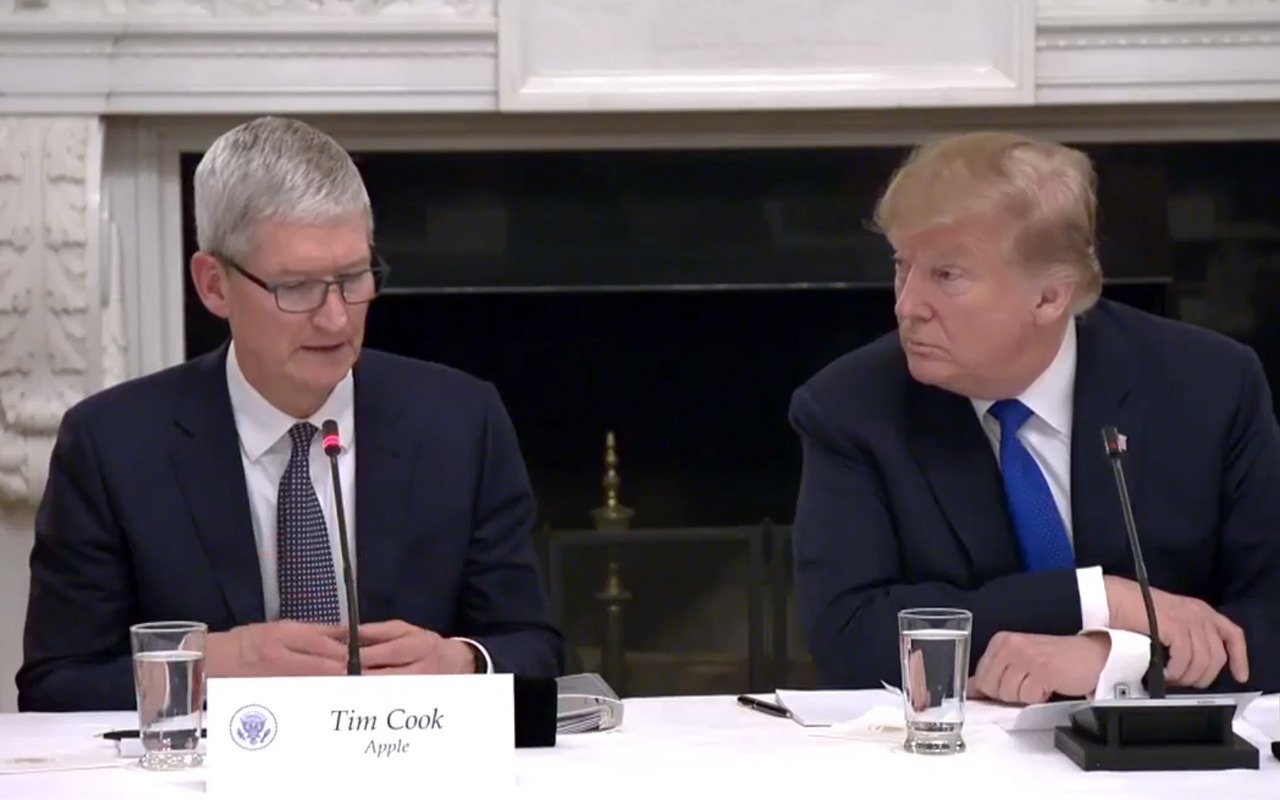
Apple CEO Tim Cook [left] with Donald Trump [right]

Proposed tariffs under the Trump administration could trigger considerable price increases for consumer electronics in the United States, though Apple may be able to weather the storm.
During his first time in office, President Donald Trump’s trade war with China resulted in price increases. While there were threats that Apple’s products would be dinged by tariffs, Tim Cook’s regular Trump talks helped Apple avoid being hurt by the import charges.
For Trump’s second term in office, it seems that a similar situation could happen again, with Chinese imports being hit with high tariffs. However, this time Apple is in a much better position.
In an October report from the Consumer Technology Association exploring how the proposed Trump Tariffs will increase the prices of consumer goods, it seems to be very bad news for consumers.
The 22-page report explains the Trump proposals will implement “high and broad tariffs” on imports from other countries. This is boiled down to three bands, with 10% and 20% tariffs across the board, except for a 60% tariff on China.
The goals of the tariffs range from a continued push to bring manufacturing to the United States instead of abroad, fighting foreign competition, and as a way to replace U.S. income tax. They are also intended to combat countries that apply higher tariff rates against U.S. goods, to retaliate against countries who restrict U.S. exports and investments, and to penalize countries that move away from the U.S. dollar for international transactions.
The CTA believes that the tariffs won’t achieve the goals, but will instead have “unintended consequences” including a deteriorated reputation for the U.S., a downgraded credit rating, and more trade restrictions.
Price rises
The way tariffs function is that there are costs applied to the importer. The company can choose to absorb those fines, or penalize the consumer. They are never paid by the country of origin.
So, as a rule, the cost of the tariff is passed along to consumers in the form of price hikes.
As to how more expensive it could be, the CTA expects that the price increases could result in notebooks and tablets being priced at 46% higher than current levels. Game consoles could increase in price by 40%, while smartphones could be 26% more expensive.
Computer accessories could go up 10.9%, with monitors possibly costing another 31.2% more, and desktop computers up 6.2%.
The CTA believes that tariffs on the above products, as well as video games, headphones, connected devices, TVs, and batteries could end up reducing the American consumer’s spending power by $90 billion.
Location, location, location
The report adds that the tariffs probably won’t result in that much manufacturing returning to the United States at all. Reshoring tech manufacturing to the U.S. likely isn’t going to happen on a large scale, as Tim Cook has said in the past, but it could drive production to other countries instead of China.
The belief is that a manufacturer will prefer to be hit by a lower tariff of 10% or 20% than the 60% of Chinese imports. Since moving the manufacturing to the United States would be too cost-prohibitive, due to high wages among other factors, the next best compromise is to choose another emerging economy.
Following the last trade war, Apple has been taking this very approach. While it has been moving work out from China for some of its manufacturing, it has instead set up more bases of manufacturing in its supply chain.
The biggest example is India, which Apple is continuing to use for iPhone production. Apple could feasibly use India to make the iPhone destined for the United States to secure the lower tariff.
Chinese iPhone production would therefore cover other territories around the world, avoiding U.S. imports completely.
It’s very plausible that new tariffs will be implemented quickly after Trump takes office. But it is also very evident that Apple has prepared itself for the inevitable.




